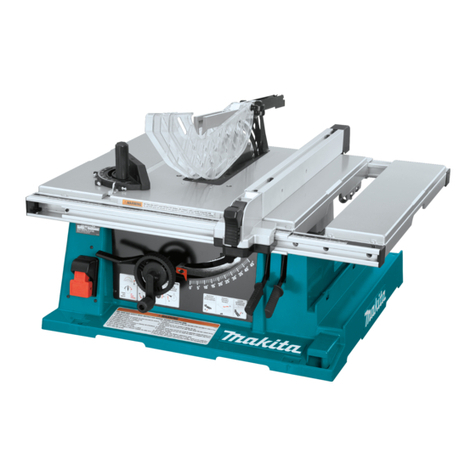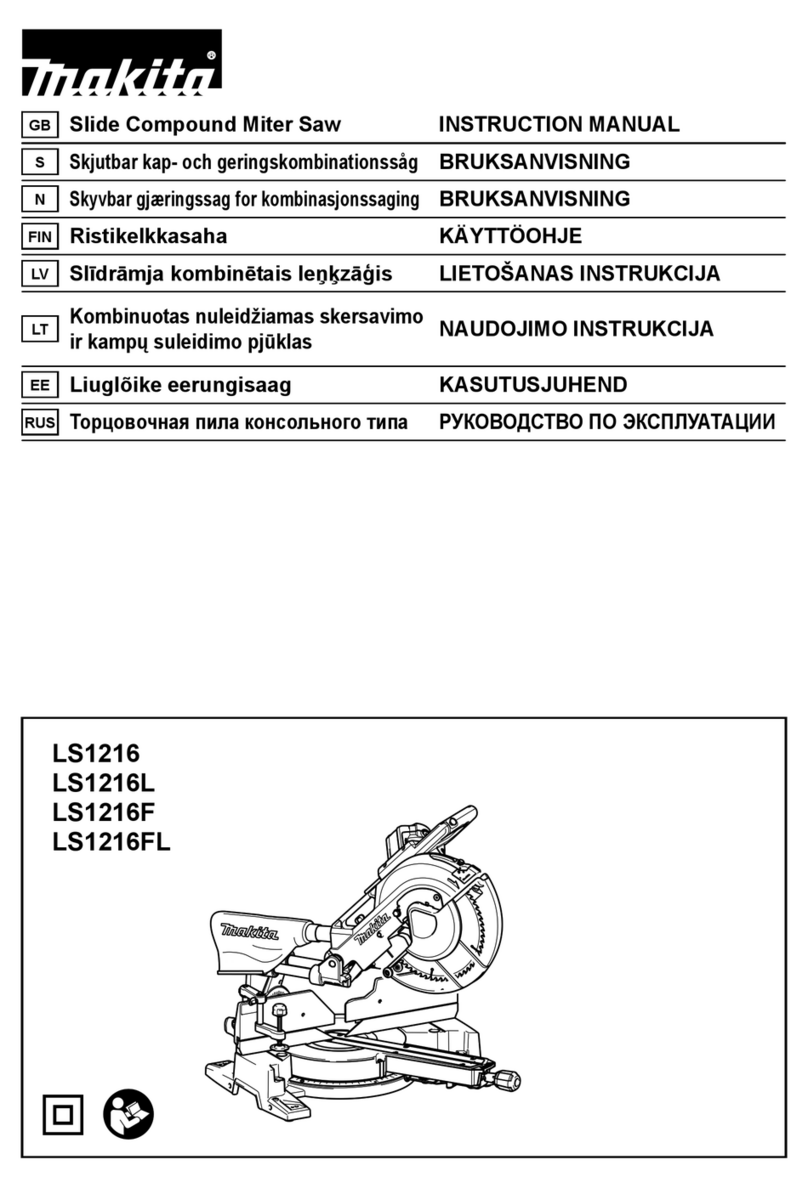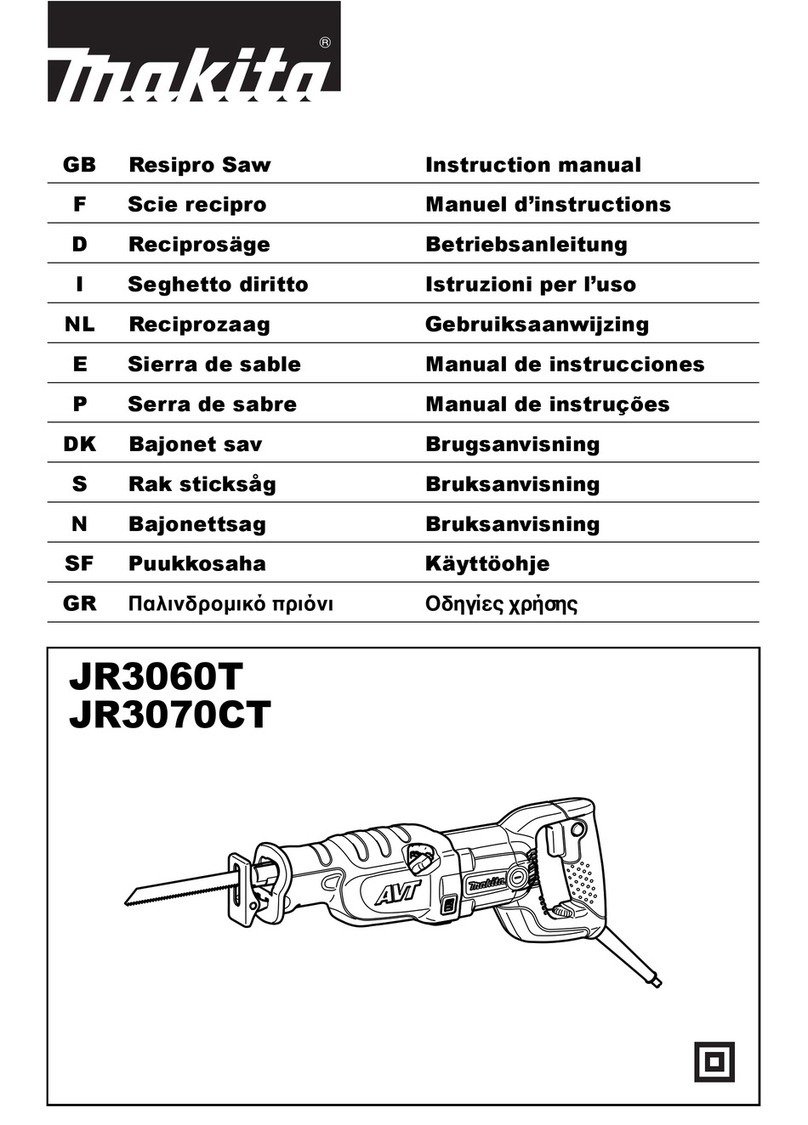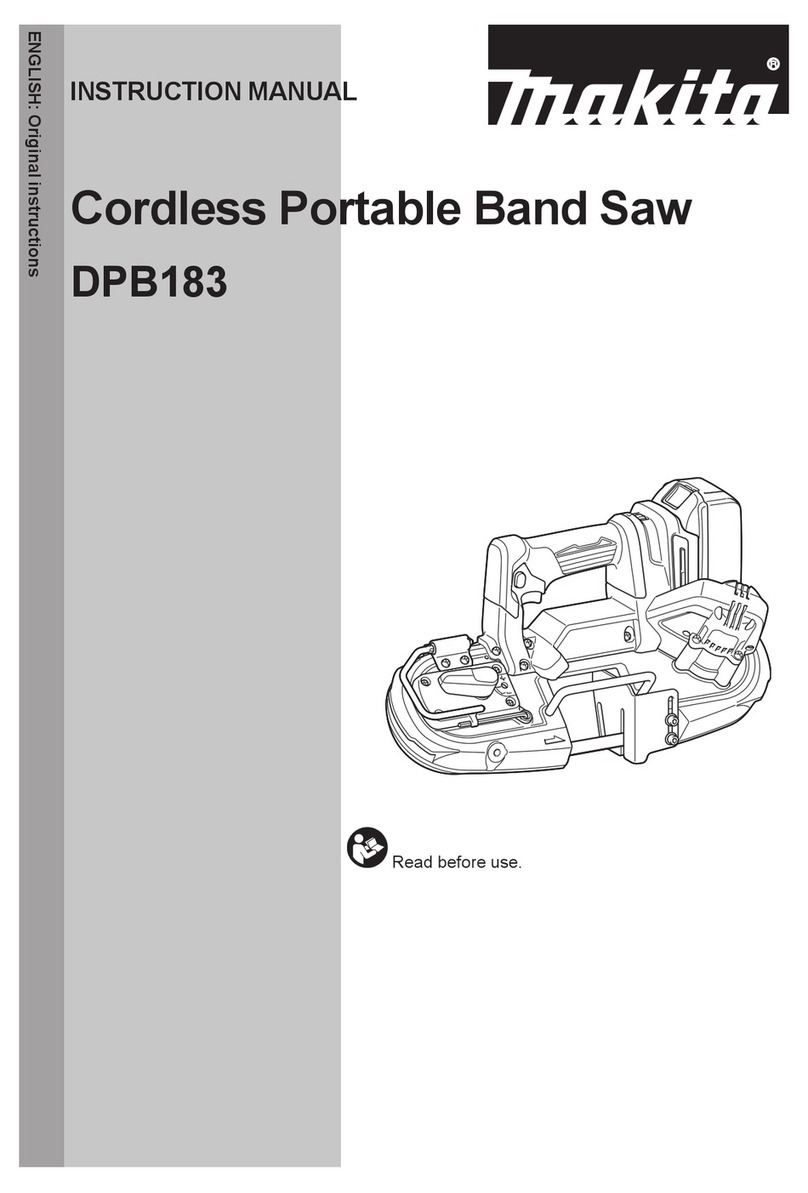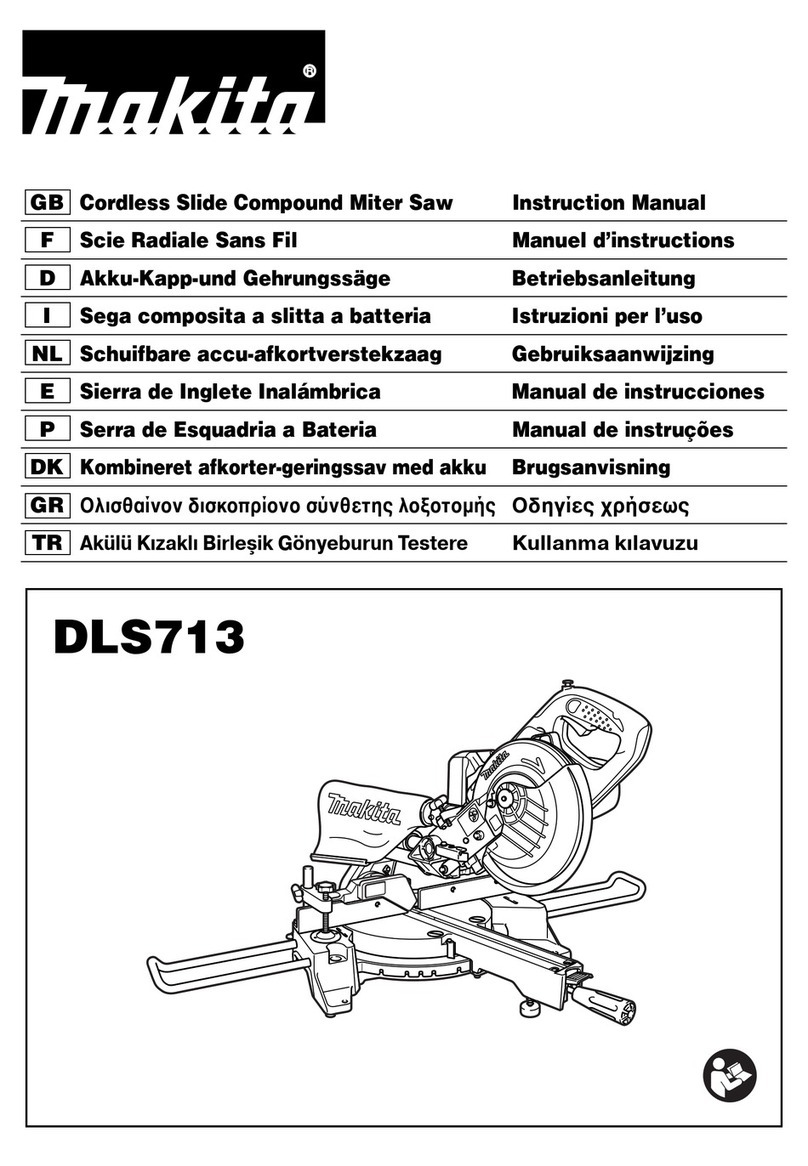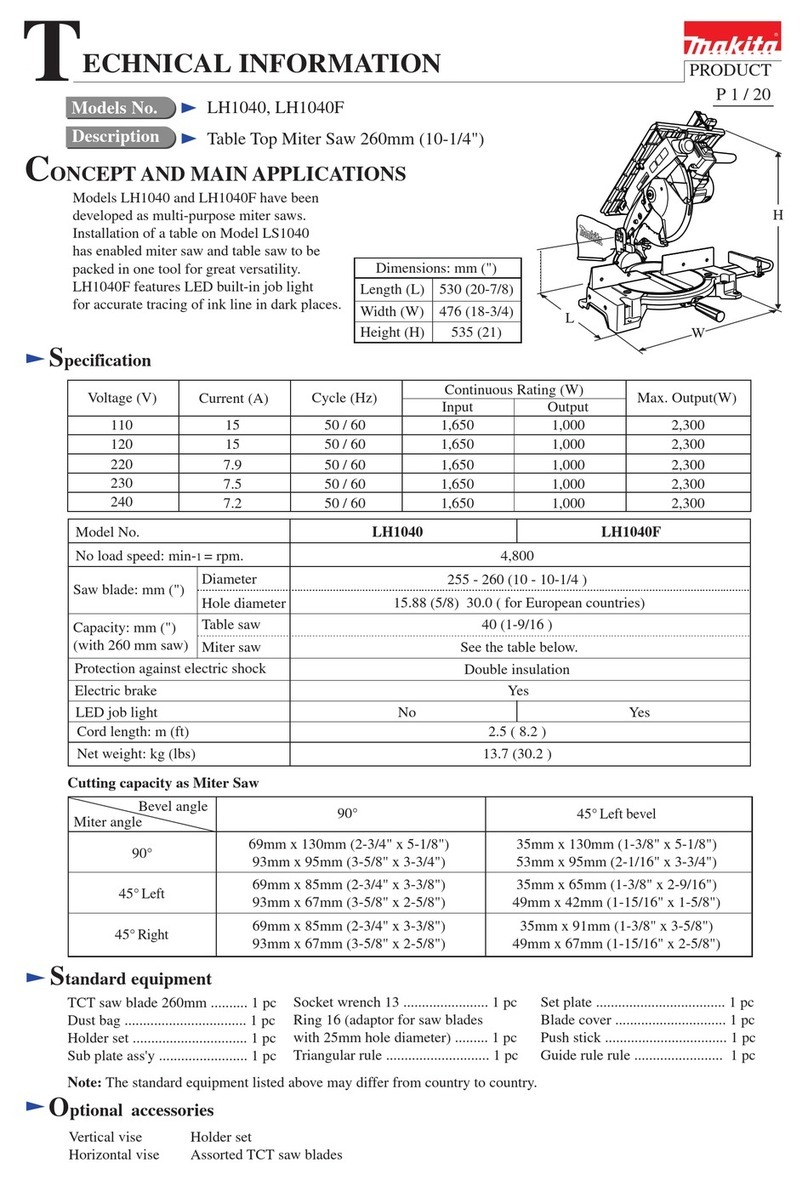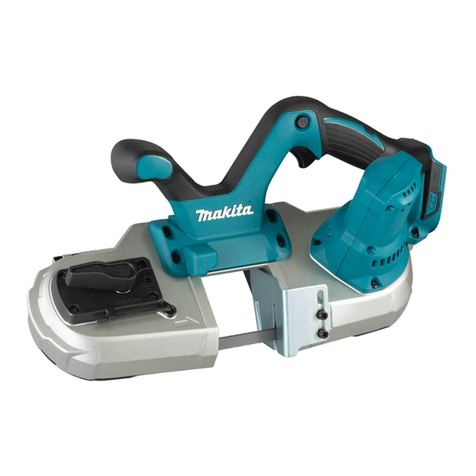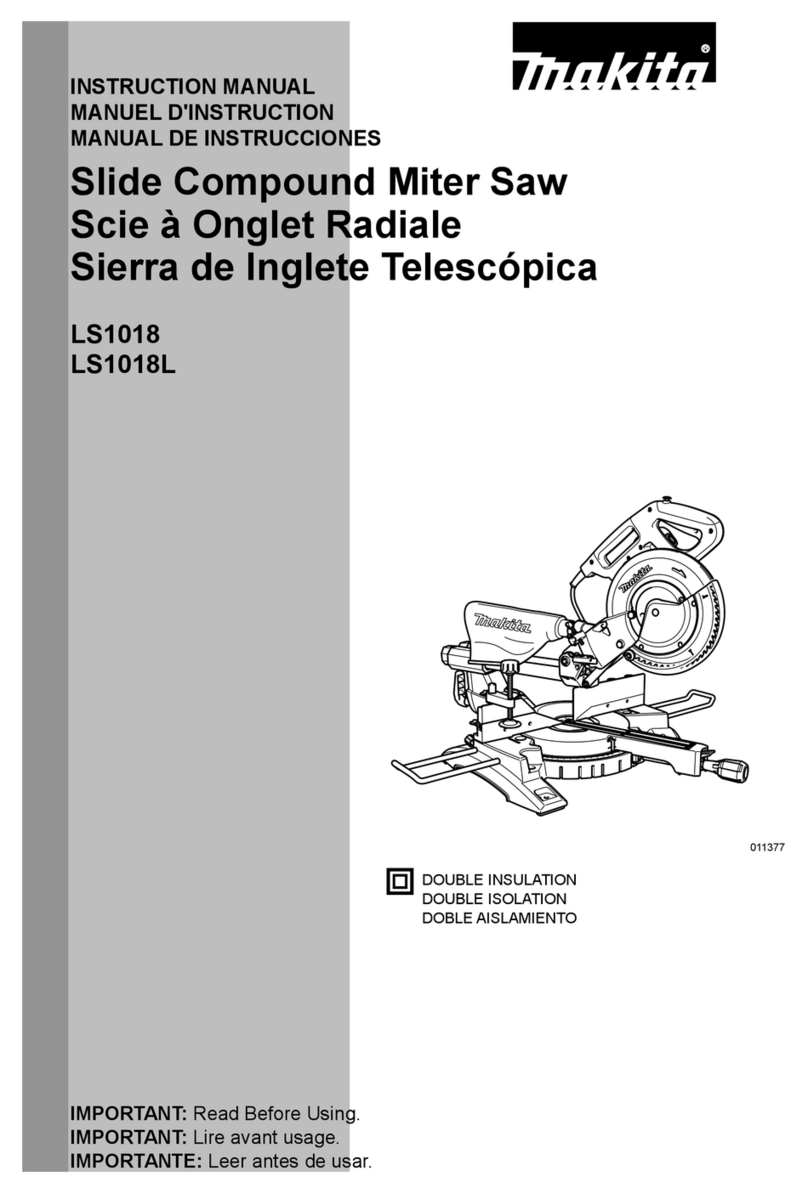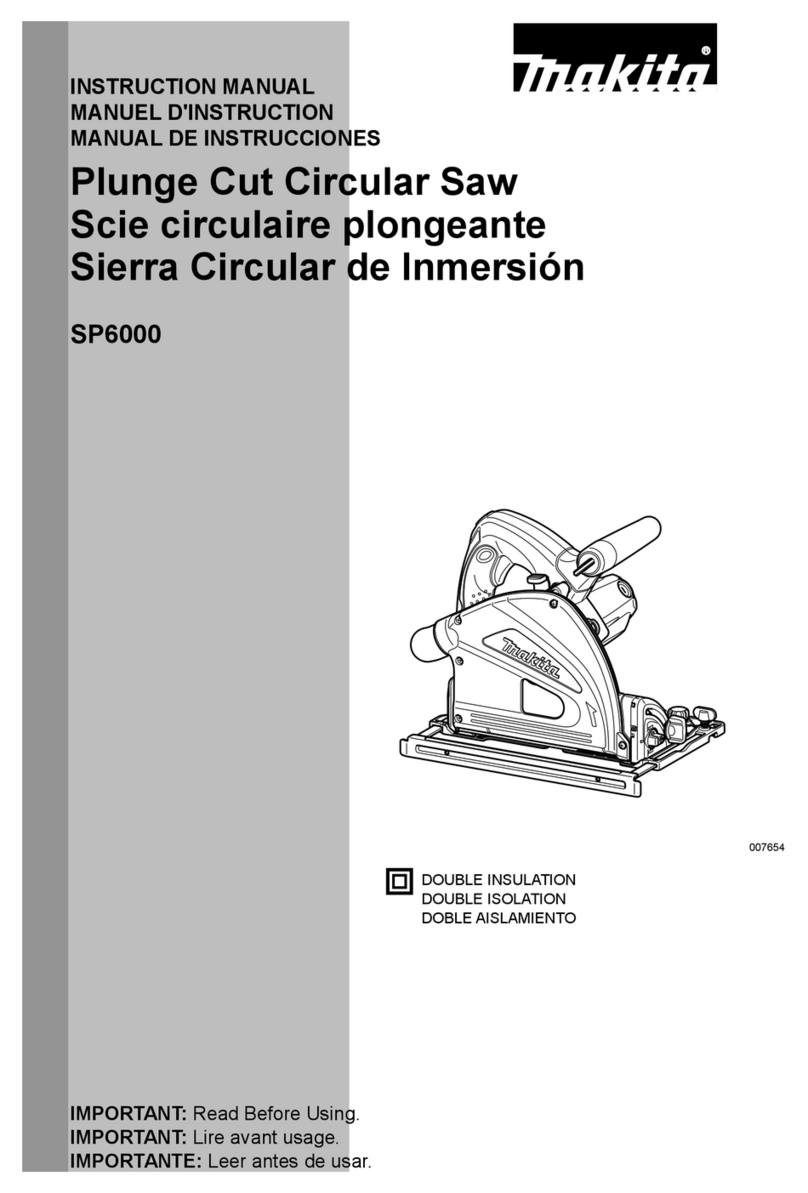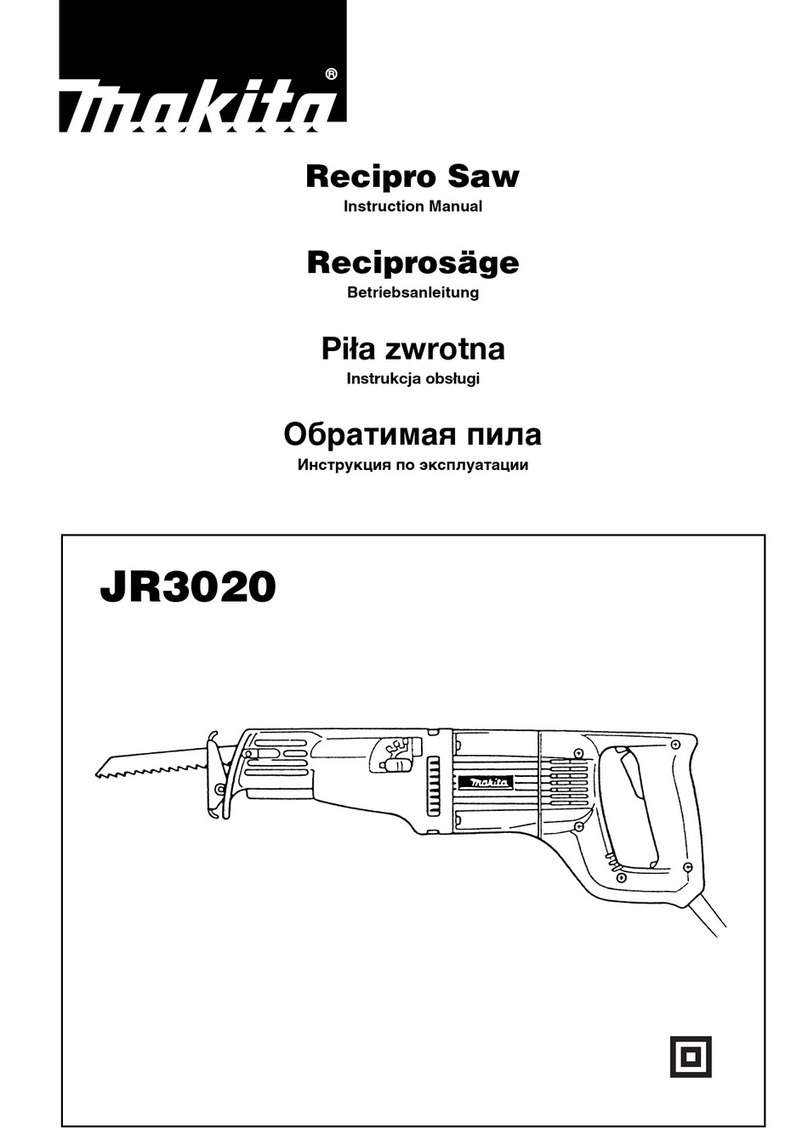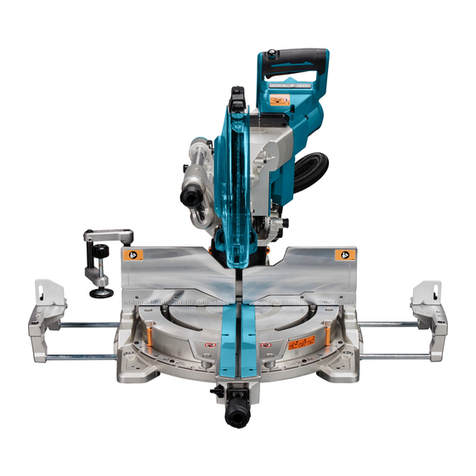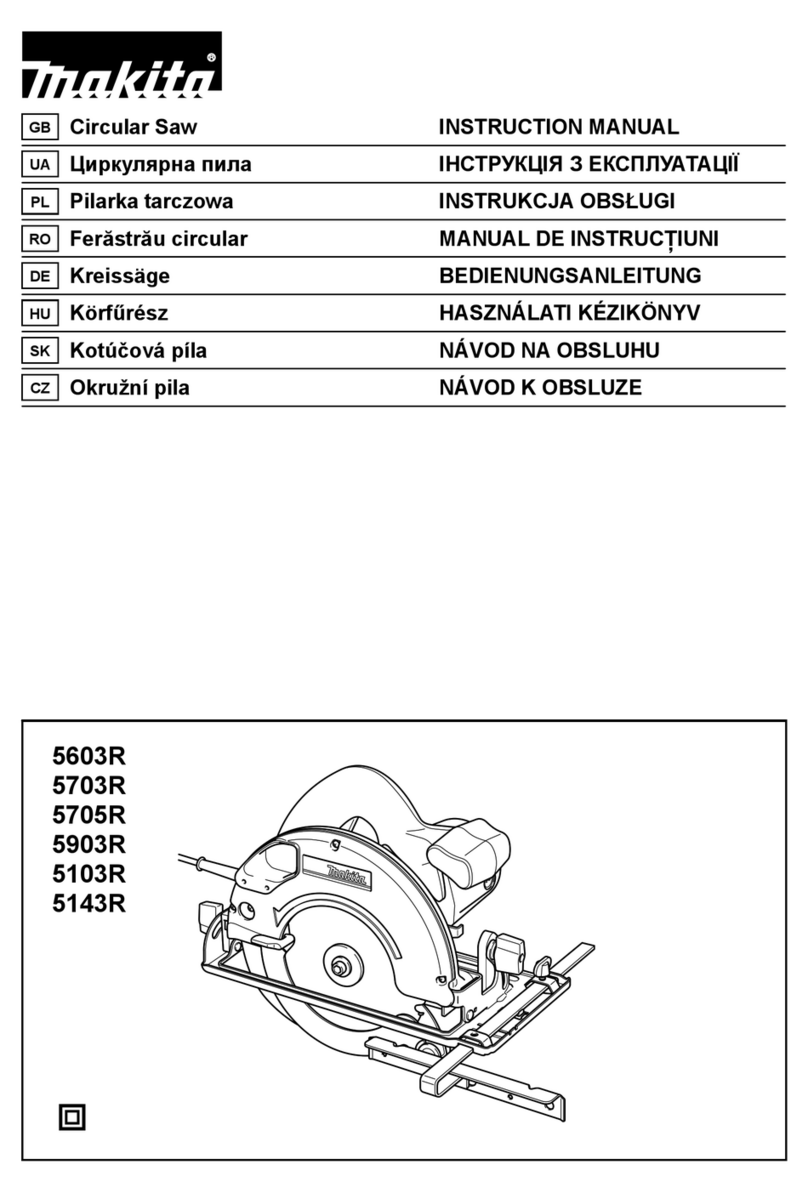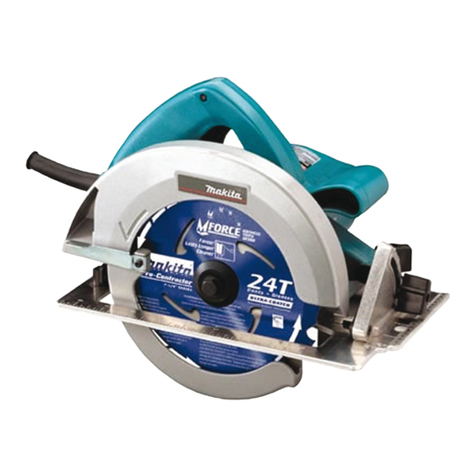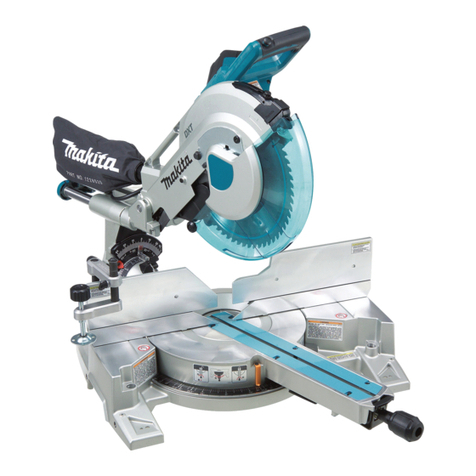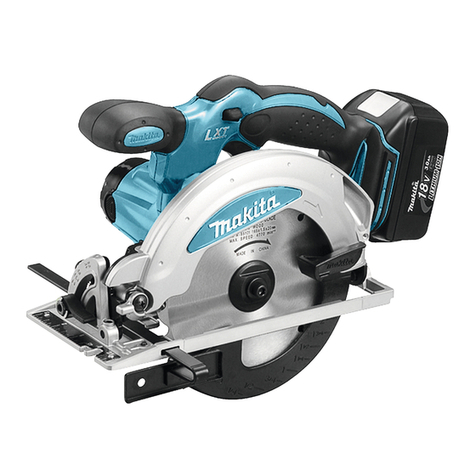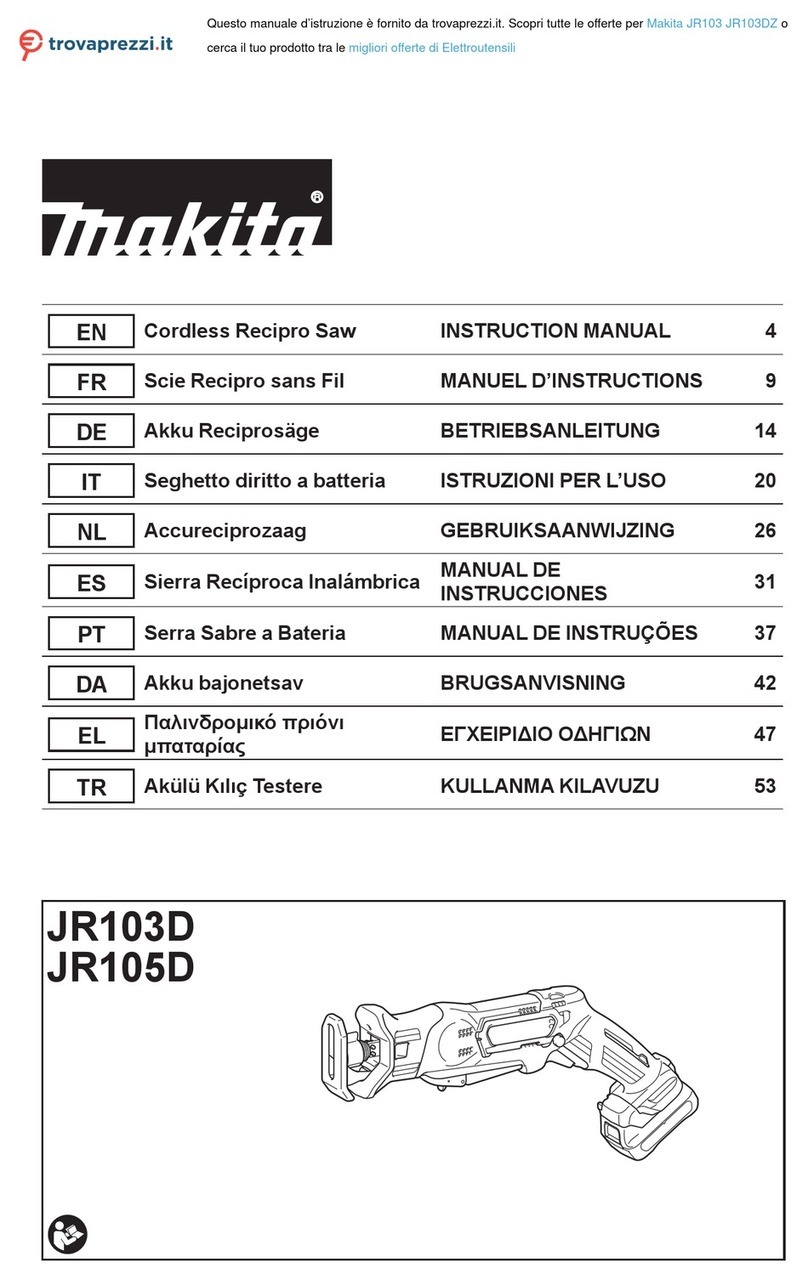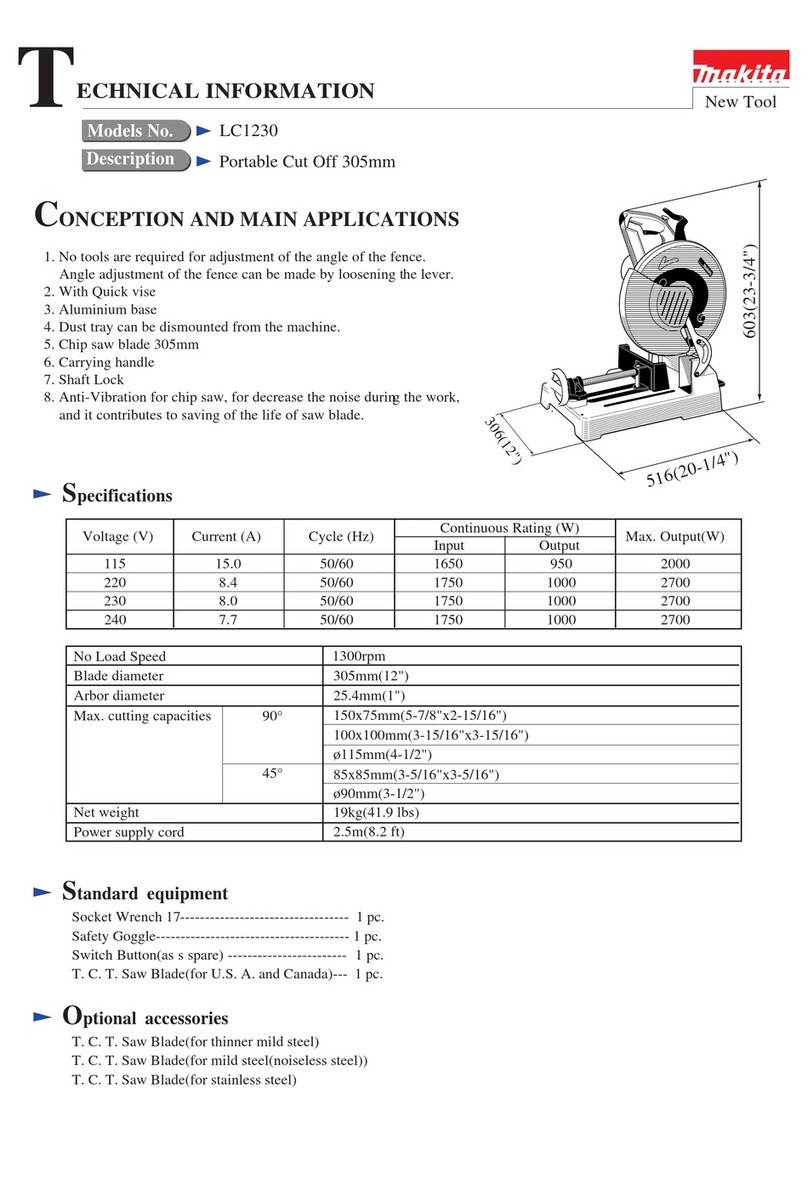6
11. Before using the tool on an actual workpiece, let
it simply run for several minutes first. Watch for
flutter or excessive vibration that might be
caused by poor installation or a poorly balanced
wheel.
12. Watch out for flying sparks when operating.
They can cause injury or ignite combustible
materials.
13. Remove material or debris from the area that
might be ignited by sparks. Be sure that others
are not in the path of the sparks. Keep a proper,
charged fire extinguisher closely available.
14. Use the cutting edge of the wheel only. Never
use side surface.
15. If the wheel stops during the operation, makes
an odd noise or begins to vibrate, switch off the
tool immediately.
16. Always switch off and wait for the wheel to come
to a complete stop before removing, securing
workpiece, working vise, changing work posi-
tion, angle or the wheel itself.
17. Do not touch the workpiece immediately after
operation; it is extremely hot and could burn
your skin.
18. Store wheels in a dry location only.
19. Ensure that ventilation openings are kept clear
when working in dusty conditions. If it should
become necessary to clear dust, first disconnect
the tool from the mains supply (use non metallic
objects) and avoid damaging internal parts.
SAVE THESE INSTRUCTIONS.
INSTALLATION
Securing cut-off (Fig. 1)
This tool should be bolted with two bolts to a level and
stable surface using the bolt holes provided in the tool’s
base. This will help prevent tipping and possible personal
injury.
FUNCTIONAL DESCRIPTION
CAUTION:
• Always be sure that the tool is switched off and
unplugged before adjusting or checking function on the
tool.
Switch action (Fig. 2)
CAUTION:
• Before plugging in the tool, always check to see that
the switch trigger actuates properly and returns to the
“OFF” position when released.
For tool with lock-off button
To prevent the switch trigger from being accidentally
pulled, a lock-off button is provided.
To start the tool, depress the lock-off button and pull the
switch trigger. Release the switch trigger to stop.
Spark guard (Fig. 3)
The spark guard is factory-installed with its lower edge
contacting the base. Operating the tool in this position
will cause many sparks to fly around. Loosen the screw
and adjust the spark guard to a position at which mini-
mum sparks will fly around.
Interval between vise and guide plate (Fig. 4 & 5)
The original spacing or interval between the vise and the
guide plate is 0 – 170 mm. If your work requires wider
spacing or interval, proceed as follows to change the
spacing or interval.
Remove the two hex bolts which secure the guide plate.
Move the guide plate as shown in the figure and secure it
using the hex bolts. The following interval settings are
possible:
35 – 205 mm
70 – 240 mm
CAUTION:
• Remember that narrow workpieces may not be
secured safely when using the two, wider interval set-
tings.
Setting for desired cutting angle (Fig. 6)
To change the cutting angle, follow the procedure below:
1. Loosen the two hex bolts.
2. Set the guide plate to the desired angle (0° – 45°).
3. For more accurate angle, use a protractor or triangle
ruler. Keep the handle down so that the cut-off wheel
extends into the base. At the same time, adjust the
angle between the guide plate and the cut-off wheel
with a protractor or triangle ruler.
4. Tighten the hex bolts securely. At this time, make sure
that the guide rule does not move.
5. Check the angle again.
CAUTION:
• Never perform miter cuts when the guide plate is set at
the 35 – 205 mm or 70 – 240 mm position.
NOTE:
• The scale on the guide plate is only a rough indication.
ASSEMBLY
CAUTION:
• Always be sure that the tool is switched off and
unplugged before carrying out any work on the tool.
Removing or installing cut-off wheel (Fig. 7, 8, 9,
10 & 11)
To remove the wheel, loosen the clamping screw, hold
the safety guide by both hands and raise it, then slide the
safety guide towards yourself.
Press the shaft lock so that the wheel cannot revolve and
use the socket wrench to loosen the hex bolt by turning it
counterclockwise. Then remove the hex bolt, outer
flange and wheel. (Note: Do not remove the inner flange,
ring and O-ring.)
To install the wheel, follow the removal procedures in
reverse.
CAUTION:
• Be sure to tighten the hex bolt securely. Insufficient
tightening of the hex bolt may result in severe injury.
Use the socket wrench provided to help assure proper
tightening.
• Always use only the proper inner and outer flanges
which are provided with this tool.
• Always lower the safety guard after replacing the
wheel.
